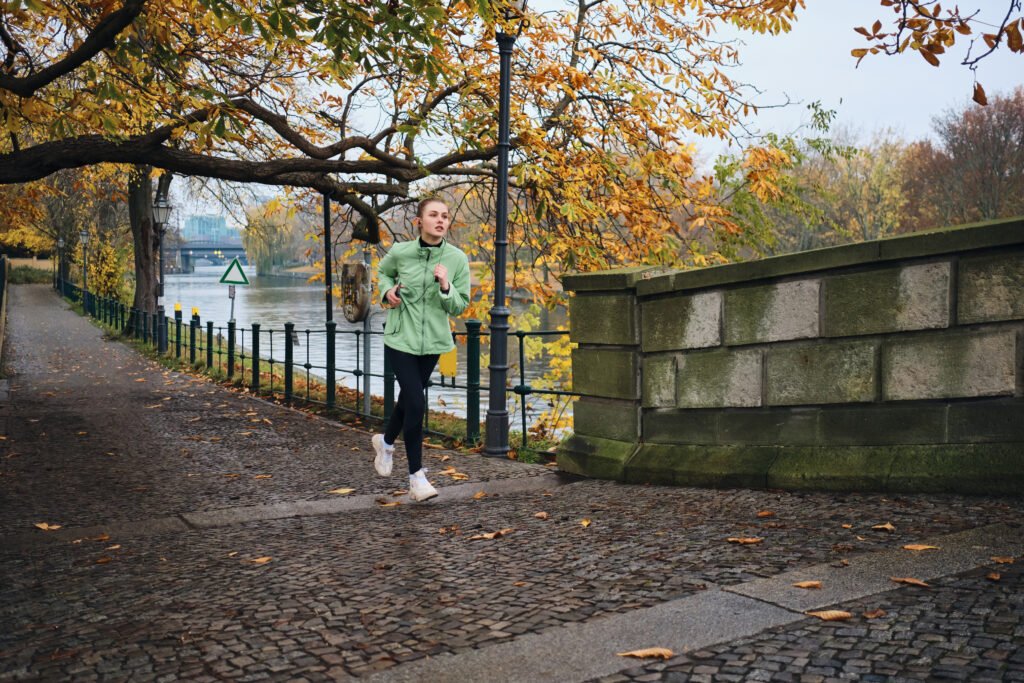Running. It’s one of the most fundamental forms of human movement, yet it can be one of the most complex and rewarding pursuits to master. Whether you’re lacing up your shoes for the first time to clear your head or you’re a seasoned marathoner chasing a personal best, running offers a unique blend of physical challenge and mental clarity. This post is designed to be your companion on that journey, exploring the key pillars that will help you run stronger, smarter, and with more joy.
The Foundation: Perfecting Your Running Form
While there’s no single “perfect” form that fits every body, efficient running mechanics are crucial for preventing injury and improving performance. It starts from the ground up: aim for a mid-foot strike directly under your center of gravity, rather than reaching out with your heel which acts as a brake and sends impact shock through your joints. Keep your posture tall yet relaxed, with a slight forward lean from the ankles—not the waist. Your arms should swing naturally like pendulums, driving forward and back to counterbalance your leg movement, not across your body. Your hands should be loose, as if you’re holding a single potato chip you don’t want to crush. Finally, focus on your cadence; a quicker, lighter stride (aiming for around 170-180 steps per minute) reduces the time your feet spend on the ground, making your run feel more effortless and reducing the risk of over striding.
Gear Up: The Importance of the Right Running Shoe
You don’t need the most expensive watch or the highest-tech clothing to start running, but investing in the right pair of shoes is non-negotiable. Running in old, worn-out, or incorrect shoes is a fast track to discomfort and injury. The best shoe for you is highly personal and depends on your foot shape, arch type, and running gait. The critical step is to visit a specialty running store where experts can analyze your stride. They’ll look at whether you overpronate (your foot rolls inward), supinate (rolls outward), or have a neutral gait. This analysis will guide you toward a shoe with the right amount of stability, cushioning, and support for your unique biomechanics. Remember, shoes have a lifespan—typically between 300 to 500 miles—after which they lose their shock absorption, so track your mileage and replace them regularly.
Building Endurance: Beyond Just Putting in Miles
Endurance isn’t just about being able to run longer; it’s about your body’s ability to efficiently use oxygen and fuel to sustain effort. The most effective way to build this is through consistent, easy-paced running. Many beginners make the mistake of running every single run at a hard, breathless pace. Instead, the bulk of your training (around 80%) should be at a “conversational pace,” meaning you could comfortably hold a conversation without gasping for air. This builds your aerobic engine without excessive fatigue. To complement this, incorporate one weekly long run, gradually increasing its distance by no more than 10% per week. This slow build allows your muscles, tendons, and cardiovascular system to adapt and grow stronger, safely expanding your limits.
The Need for Speed: Incorporating Interval Training
If easy runs build your engine, speed work fine-tunes it for high performance. Interval training, which involves alternating periods of high-intensity effort with periods of recovery, is a powerful tool for any runner. It improves your running economy (the amount of oxygen used at a given pace), increases your lactate threshold (allowing you to sustain a faster pace for longer), and builds mental toughness. A simple workout to start with is strides: after an easy run, run four to six 20-second bursts at a fast but controlled pace, with full recovery in between. As you advance, you can try structured workouts like 400-meter repeats on a track. The key is to ensure your recovery jogs or walks are long enough to allow you to complete the next interval with good form.
Listening to Your Body: Recovery and Injury Prevention
Running breaks your body down; it’s during recovery that it rebuilds itself stronger. Neglecting recovery is the primary cause of plateaus and injuries. Active recovery, such as walking, cycling, or yoga, on your rest days promotes blood flow and healing without impact. Nutrition is also a form of recovery; consuming a mix of protein and carbohydrates within 30-60 minutes after a long or hard run helps repair muscle tissue and replenish glycogen stores. Furthermore, don’t underestimate the power of sleep, which is when the most critical hormonal and muscular repair occurs. Pay attention to niggles and aches; sharp pain is a signal to stop, while general muscle soreness is normal. Incorporating strength training, particularly for your glutes, core, and hips, is one of the best proactive measures you can take to create a resilient body capable of handling the repetitive stress of running.
FAQ
Q: How often should a beginner start running?
A: Start with a run/walk strategy, such as running for one minute and walking for two minutes, repeated for 20-30 minutes, three times a week. Focus on consistency over distance or speed to allow your body to adapt.
Q: I always get a stitch in my side. How can I prevent it?
A: Side stitches (or side cramps) are often linked to breathing or digestion. Avoid eating a large meal right before a run. Practice deep, rhythmic belly breathing instead of shallow chest breaths. If you get one, slow down, take a deep breath, and exhale forcefully, or try lifting the arm on the side of the stitch and stretching sideways.
Q: Is it better to run on a treadmill or outside?
A: Both have advantages. Treadmills are easier on the joints, weather-proof, and great for controlled workouts. Outdoor running engages more stabilizer muscles, provides varied terrain, and can be more mentally stimulating. The best choice is the one that keeps you consistent and enjoying your run.
Q: What’s the best way to stay motivated?
A: Set specific, achievable goals (e.g., run a 5K, run three times a week for a month). Find a running buddy or join a local club for accountability. Vary your routes to keep things interesting, and track your progress—seeing your improvement over time is a powerful motivator.
Conclusion
Running is a simple act, but its layers are deep. It is a test of physical endurance, a practice in mental fortitude, and a moving meditation all at once. By paying attention to your form, equipping yourself properly, balancing endurance with speed, and prioritizing the often-overlooked art of recovery, you transform running from a mere workout into a sustainable and deeply fulfilling lifestyle. The road is always there, waiting. Your next step is the most important one. Lace up, head out, and discover where it can take you.


